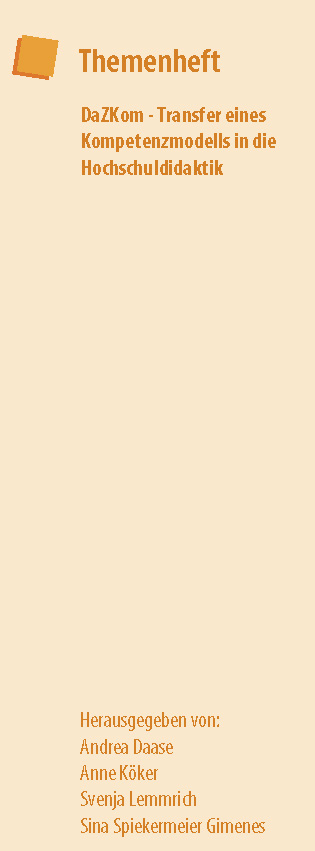The DaZKom Structure Model 2023.
Modelling Competence for Multilingual- and Register-Sensitive Linguistic Expansion in Content Teaching
DOI:
https://doi.org/10.11576/hlz-6743Keywords:
teacher education, teacher professionalization, didactics, multilingualism, subject register, German as a second languageAbstract
The DaZKom model describes (pre-service) teachers’ competence in the field of German as a second language (GSL). It has been developed since 2009 during the project DaZKom. Since that time, it has been critically reflected upon and further developed in the follow-up projects DaZKom-Video and DaZKom-Transfer. It models teaching competence on the basis of the three dimensions subject registers, multilingualism and didactics, which are differentiated into sub-dimensions and facets. The dimension subject registers focuses on languages’ function in subject learning. For that it is essential to systematically develop more formal language registers, which orient towards written cultural practice. This linguistic expansion implies the functional inclusion of further semiotic resources. The dimension multilingualism focuses on the learning processes that take place under multilingual conditions in subject lessons. The development of language in formal German registers, which schools are required to facilitate, is part of an overall linguistic development that aims at the expansion of the register flexibility of all pupils. The dimension didactics represents subject-functional language education based on formative diagnosis. The theoretical foundations lie in a sociocultural theory of learning with the concepts of the zone of proximal development (ZPD), internalization, and mediation, as well as a social theory of language with its functional metalanguage and a focus on genre-specific functional appropriateness.
Downloads
Published
How to Cite
Issue
Section
License
Copyright (c) 2024 Udo Ohm, Andrea Daase, Anne Köker, Sina Spiekermeier Gimenes, Svenja Lemmrich

This work is licensed under a Creative Commons Attribution-ShareAlike 4.0 International License.
Sämtliche Inhalte der HLZ werden freigegeben unter der Creative-Commons-Lizenz Namensnennung, Weitergabe unter gleichen Bedingungen, Version 4.0 International (CC BY-SA 4.0). Die Urheber_innen und die Rechteinhaber_innen der in der HLZ veröffentlichten Beiträge gewähren grundsätzlich allen Nutzer_innen unwiderruflich das freie, weltweite Zugangsrecht zu diesen Veröffentlichungen. Unter der Bedingung, dass Autor_innen und Herausgeber_innen gemäß der Zitationshinweise sowie die Lizenz als »Lizenz: CC BY-SA 4.0« einschließlich der untenstehenden Lizenz-URL genannt werden, dürfen die Beiträge der HLZ vervielfältigt, weitergereicht und auf beliebige Weise genutzt werden, auch kommerziell und ebenso online wie in gedruckter oder anderer Form. Auch die Bearbeitung ist erlaubt unter der zusätzlichen Bedingung, dass das neu entstandene Werk als Bearbeitung gekennzeichnet wird und im Falle einer Veröffentlichung unter derselben Lizenz wie in der HLZ freigegeben wird.





